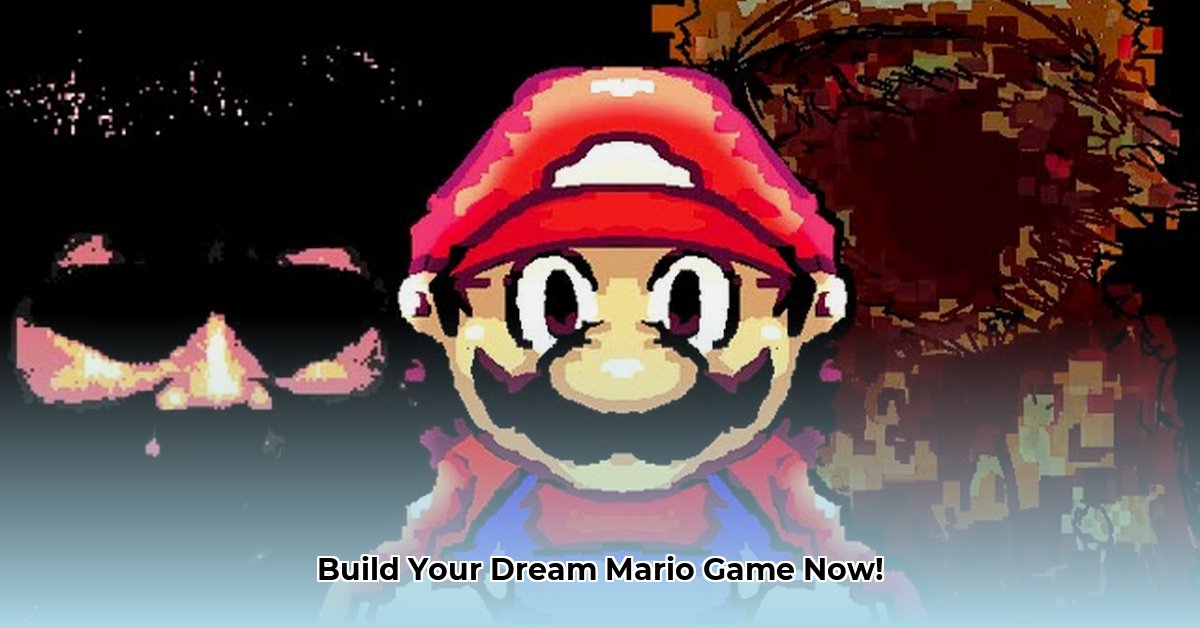
Choosing Your Game Engine: The Foundation of Your Mario Adventure
Creating a Super Mario 64-inspired game on Gamejolt requires choosing the right game engine. This decision significantly impacts the development process, the final product's quality, and the overall experience. But how do you choose? Let's break down the key factors to consider. Do you prioritize ease of use, powerful features, or a balance of both?
Understanding Your Needs: A Personalized Approach
Before diving into specific engines, ask yourself these critical questions:
What's your vision? A simple 2D platformer or an ambitious 3D open world? This directly impacts the engine's capabilities you'll need. A complex 3D environment demands a powerful engine, while a simpler 2D game might be more easily developed with a less resource-intensive option.
What's your coding experience? Beginner, intermediate, or advanced? Some engines boast visual scripting, making them more accessible to beginners, while others require proficiency in specific programming languages. Consider the learning curve alongside your current skill level.
What's your budget? Many engines offer free versions, but licensing costs can escalate with higher revenue. Long-term revenue projections should inform your engine choice, as some engines have more stringent licensing agreements than others.
Top Contenders: Unity, Unreal Engine, and Godot – A Detailed Comparison
Let’s examine three popular choices: Unity, Unreal Engine, and Godot.
Unity:
- Pros: Beginner-friendly interface, extensive documentation and tutorials, massive community support, large asset store, robust 2D and 3D capabilities. It's a versatile choice for both beginners and experienced developers.
- Cons: Can become more expensive as revenue increases, performance may not always match Unreal Engine's capabilities for extremely demanding 3D projects.
Unreal Engine:
- Pros: Powerful and feature-rich, particularly for high-fidelity 3D graphics, visual scripting (Blueprints) allows for development with less coding, excellent performance, and a large, active community. It's the ideal choice for visually impressive games.
- Cons: Steeper learning curve than Unity, can be overwhelming for newcomers, requires a stronger understanding of 3D modeling and animation.
Godot:
- Pros: Free and open-source, versatile for 2D and 3D projects, easier to learn scripting language (GDScript), efficient resource management. A cost-effective and flexible alternative to the other two.
- Cons: Smaller asset store compared to Unity and Unreal, less polished development environment, smaller community than Unity or Unreal, meaning fewer readily available resources and support.
Choosing Your Engine: A Step-by-Step Guide
Define your project's scope: A detailed project outline clarifies your needs. Will your game be primarily 2D or 3D? How many levels? What are the core gameplay mechanics?
Assess your programming skills: Be realistic about your coding capabilities. Choose an engine that aligns with your current skills and your willingness to learn.
Evaluate your budget: Analyze your financial resources. Are you comfortable with potential future licensing fees?
Explore tutorials and documentation: Investing time in tutorials and documentation provides hands-on experience and familiarizes you with each engine's interface and functionalities.
Create test projects: Download the free versions of your top choices and build small, simple projects. This helps you determine which engine best suits your workflow and preferences.
Asset Creation: Respecting Copyright and Sourcing Resources
Visuals are key in game development. You'll need models, textures, sounds – the whole shebang. But using Nintendo’s copyrighted assets without permission is a serious legal issue. Let's explore safe and legal options:
Create custom assets: This guarantees ownership and creative control, though it's the most time-consuming option. Is investing your time in creating bespoke assets worth the effort to avoid legal issues?
Utilize open-source assets: Several open-source resources offer assets with permissive licenses, allowing modification and reuse. Always verify the license terms before using any asset.
Commission artwork: Hiring professional artists ensures quality and legal compliance, but it increases development costs. Does your budget accommodate hiring artists for your project?
Building Your Game: Step-by-Step Guidance (Using GDevelop as an Example)
Let's assume you're using GDevelop, a user-friendly engine ideal for beginners. This is a simplified workflow; your steps depend on your chosen engine and game complexity.
Conceptualization and Design: Plan your levels, gameplay mechanics, and overall game style before starting development. This planning is critical for a successful project. A well-defined plan can exponentially increase efficiency.
Asset Acquisition and Creation: Gather your assets, ensuring compliance with licensing terms. Keep meticulous records of their source and license details. This diligent approach minimizes legal risks and ensures a smoother development process.
Level Construction: Use your engine's tools to build your levels. Experiment with layouts, obstacles, and challenges. Regular testing allows for early detection and correction of issues.
Gameplay Implementation: Program your game's mechanics – movement, jumping, interactions. Testing frequently is essential throughout this phase.
Rigorous Testing and Iteration: Playtest your game extensively, correcting bugs, refining gameplay, and improving the user experience. Gathering feedback from others is invaluable for improvement. Does thorough playtesting significantly reduce the chances of encountering major bugs later on?
Publishing on Gamejolt: Prepare a captivating description and trailer. Gamejolt provides resources to guide you through the publishing process. A well-crafted description and an engaging trailer greatly influence a game’s visibility and appeal.
Gamejolt Community Engagement: Collaboration and Feedback
Gamejolt fosters a collaborative community. Leverage this for support and feedback.
Share your progress: Regular updates generate excitement and attract feedback.
Seek feedback: Constructive criticism helps improve your game.
Contribute to the community: Help others, share your knowledge, and engage in collaborations.
Monetization: Legitimate Approaches
Consider monetization (while respecting copyright) to recoup investments.
Donations: Use platforms such as Patreon to offer perks to supporters.
In-game advertising (used sparingly): Integrate subtle ads that don't disrupt gameplay.
Freemium model: Offer a free version with paid upgrades or expansions.
Creating a Super Mario 64 fan game on Gamejolt is a challenging yet rewarding experience. Plan thoroughly, engage with the community, and above all, have fun!
⭐⭐⭐⭐☆ (4.8)
Download via Link 1
Download via Link 2
Last updated: Friday, May 16, 2025